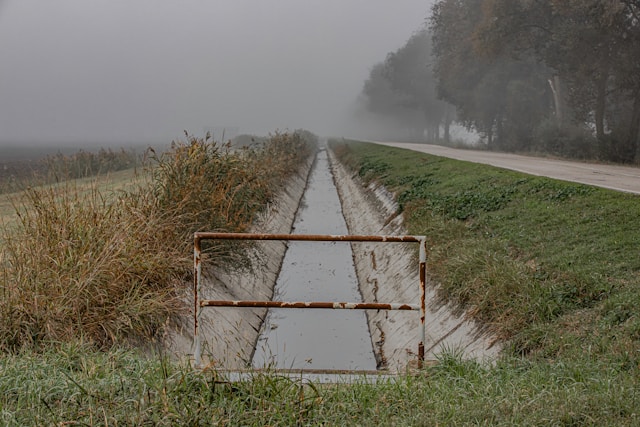French drains are perforated pipes that redirect surface water and groundwater to prevent soil erosion and protect building foundations. They are buried in gravel, which helps filter out dirt and debris and keeps the pipe from getting clogged.
Environmental Impact
Traditional drainage systems redirect water from a property to prevent damage and health issues like foundation flooding, mold, mildew, or soggy soil. They usually consist of drain pipes buried under the ground with a catch basin or drain mound to collect debris and excess water. They can be made of concrete or plastic, though concrete is more durable and long-lasting.
The pipe is often wrapped in a geotextile filter fabric that allows the water through but keeps out dirt and debris, which prevents clogs. They are ideal for homeowners with many moisture issues, like basements and sloped lawns, as they can collect seeping groundwater before redirecting it, which helps minimize flood risks and foundation damage. Professional French drainage ditch Pittsburgh, PA installation is recommended for the best results to ensure optimal functionality. A French drain without a pipe can also be used for minor water concerns, but it is more of a gravel trench than a system with perforated pipes.
Cost
French drains are a good choice for homeowners who want to control moderate amounts of groundwater and runoff water. However, a catch basin may be more appropriate when dealing with severe problems, especially in flood areas.
Consider your home’s unique landscape and typical weather patterns when choosing a drainage system. This will help you decide if a trench or French drain is the right solution for your property.
Regardless of what type of drainage system you choose, both options require extensive excavation. Carefully planning a dig is essential to ensure you don’t hit buried utility lines. In addition, backfilling and grading will help maximize your drainage system’s effectiveness.
Safety
A French drain system is safe to use, provided it has been properly installed. However, it requires routine maintenance to keep it functioning at total capacity. Inspections should be conducted at water inlet points to remove any buildup and debris and at outlet points such as grates and openings.
When planning a French drain, it is essential to consult local building authorities to ensure zoning regulations are followed. This will prevent the drain from impacting public property or that of neighbors and potentially causing legal issues.
Once the drainage system is in place, it should be covered with gravel to protect it from lawnmowers and other equipment. Then, the topsoil should be placed back over the gravel bedding to conceal the drain and create a natural look in your yard.
Maintenance
French drains consist of a perforated pipe and geotextile fabric filter that collects and diverts water. They also keep surface debris from migrating into the underground area and clogging the pipes.
Because the drain needs to be angled downward toward some point where it’s safe to deposit excess water, this system requires some slope. That’s why you want a professional to install it correctly. This means you’ll have to pay for excavation and unforeseen costs like replacing plant material, repairing concrete walkways or decks, and other landscape costs.
You’ll incur extra maintenance costs depending on how much pipe is installed. Since the system is buried underneath the ground, it risks collapsing over time if too much pipe is added. The pipe is heavier than soil and can be compressed by foot traffic or heavy equipment like ride-on lawnmowers. If it does collapse, you’ll have to dig up the pipe and replace it.
